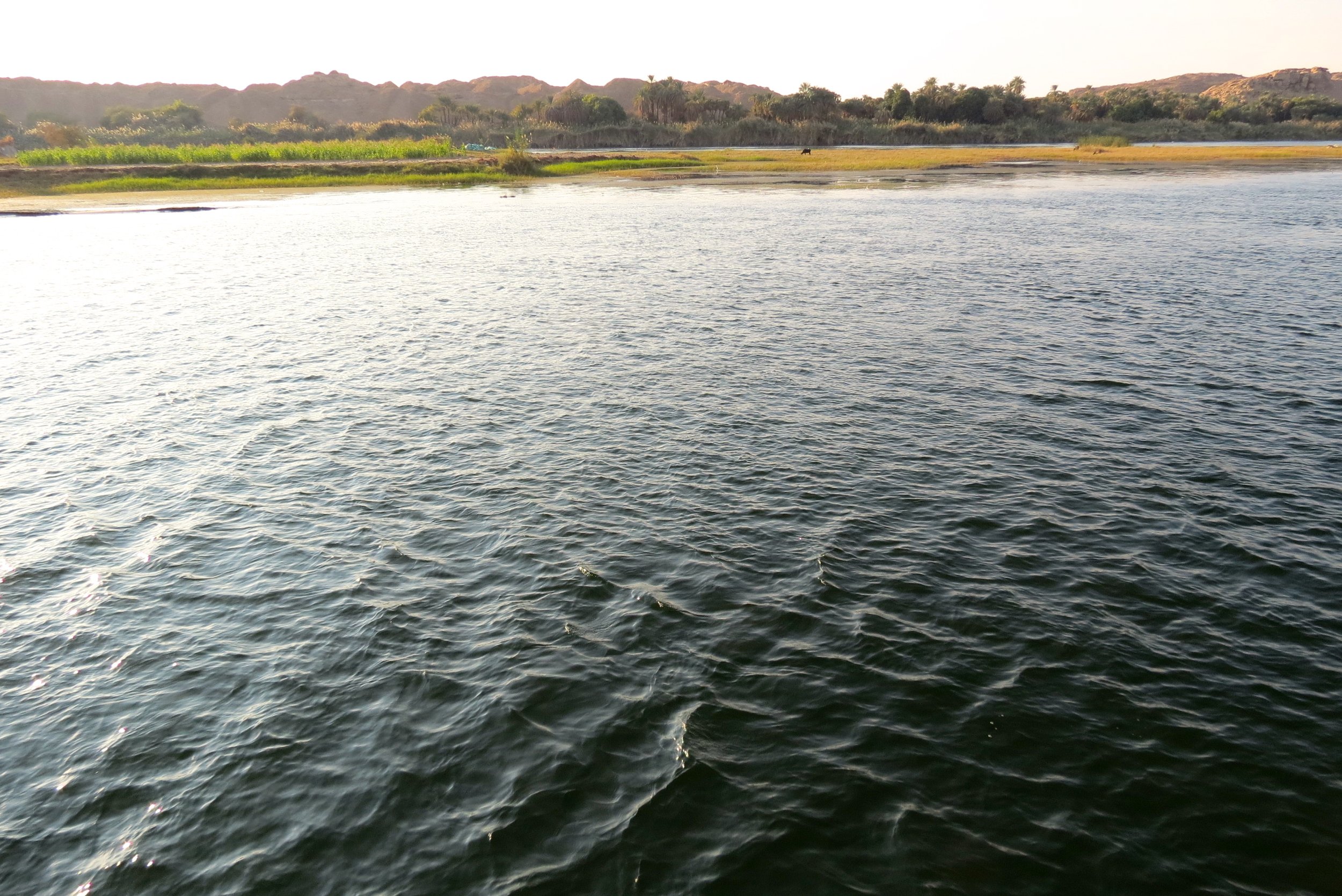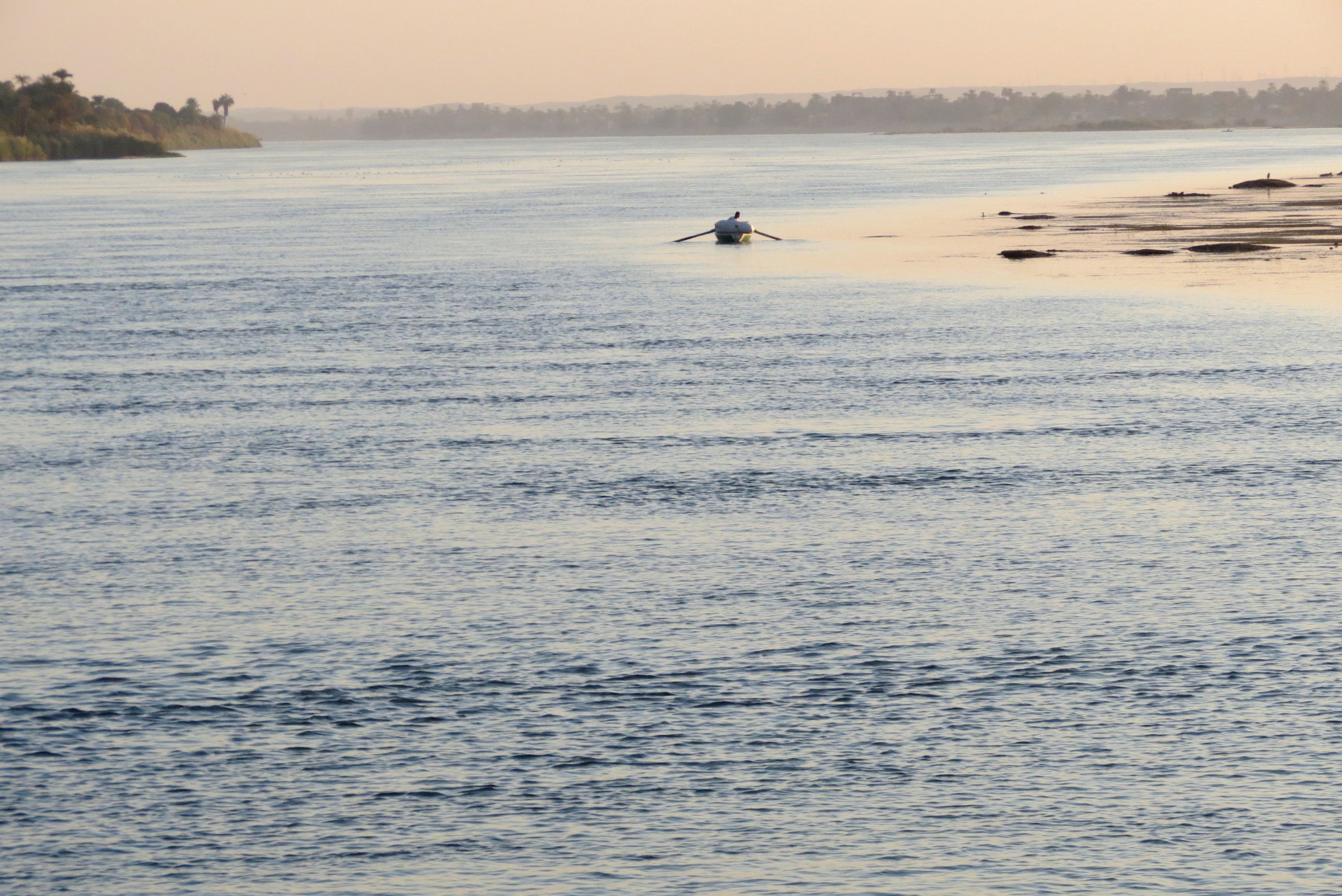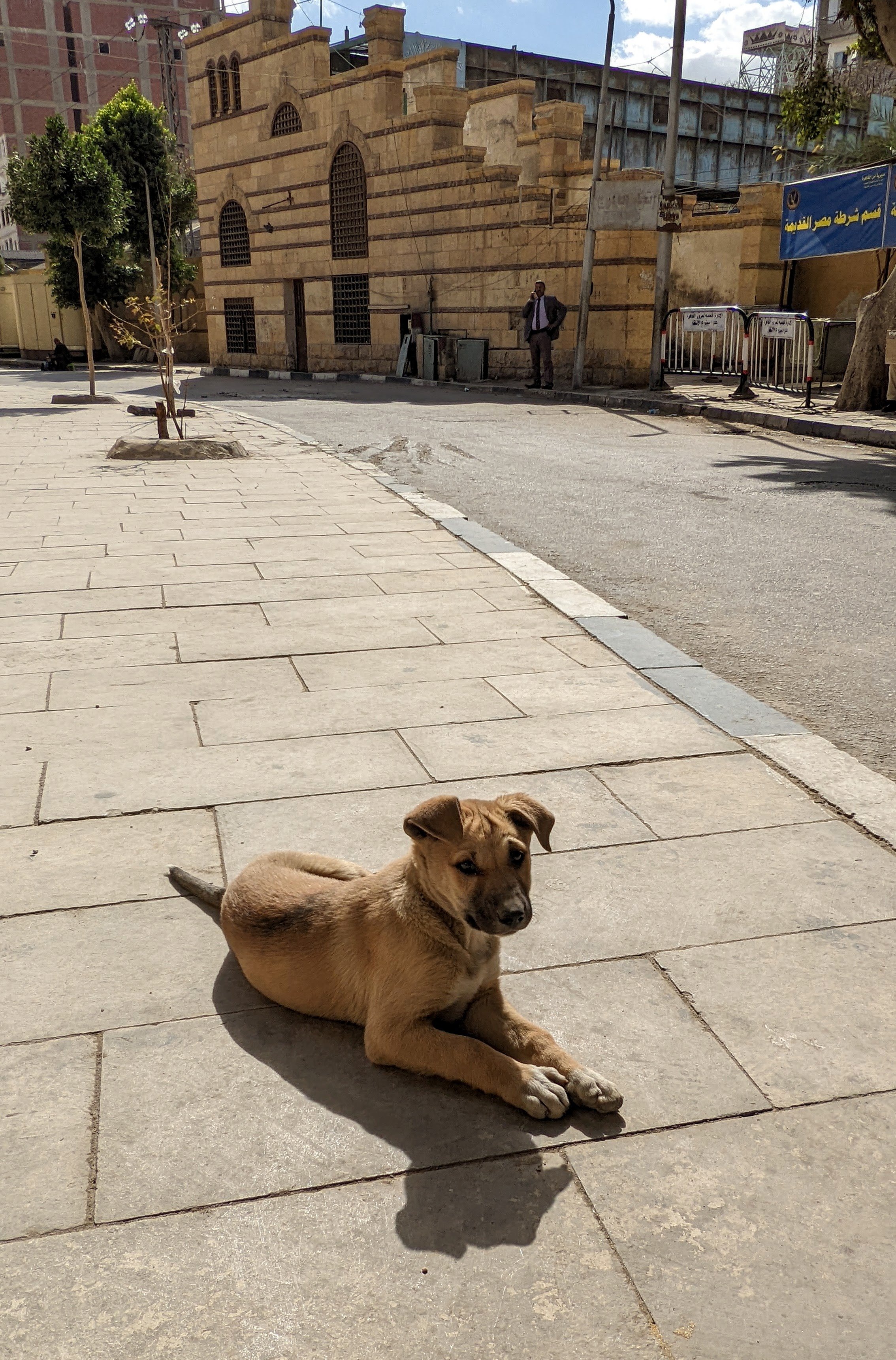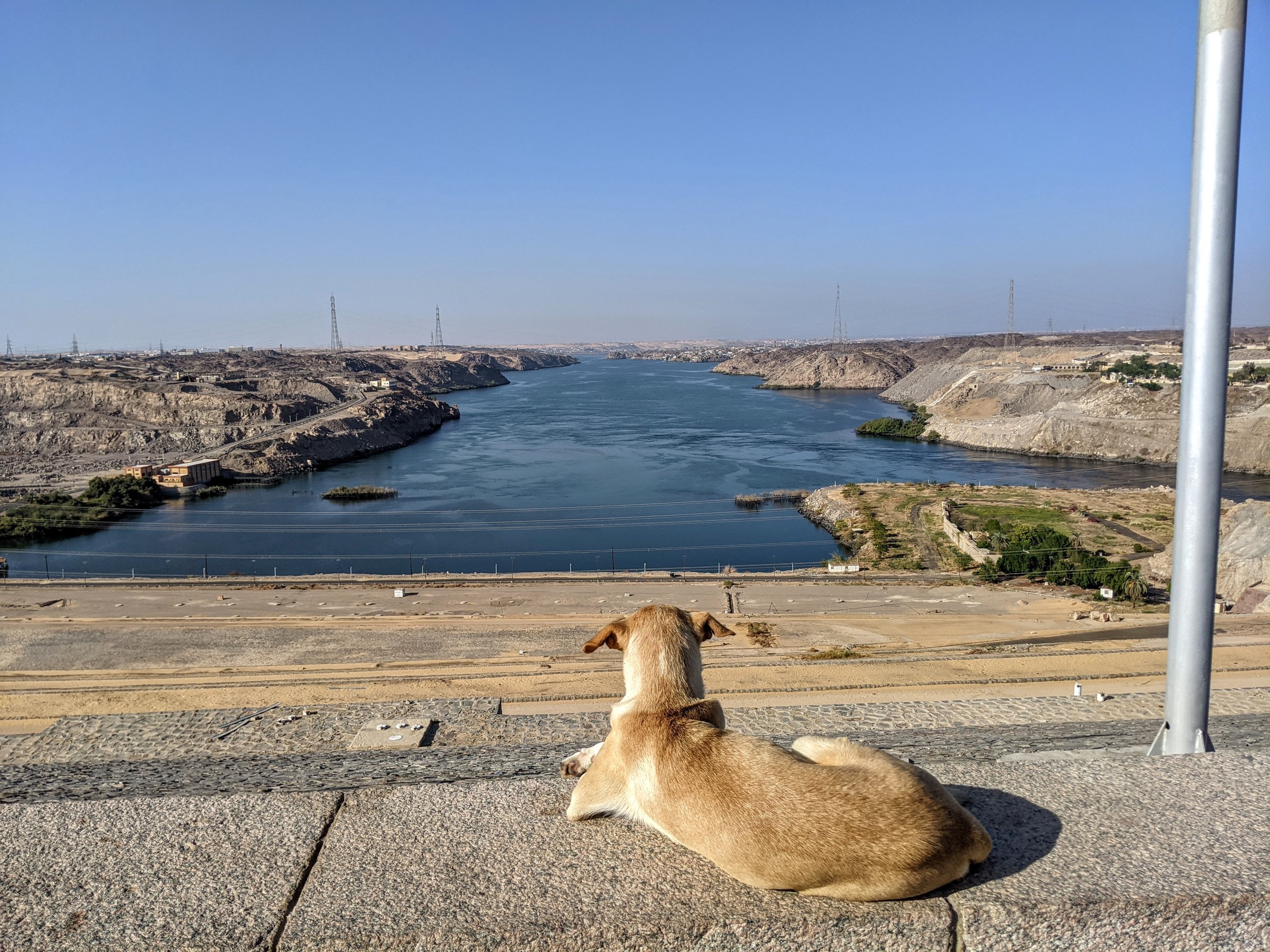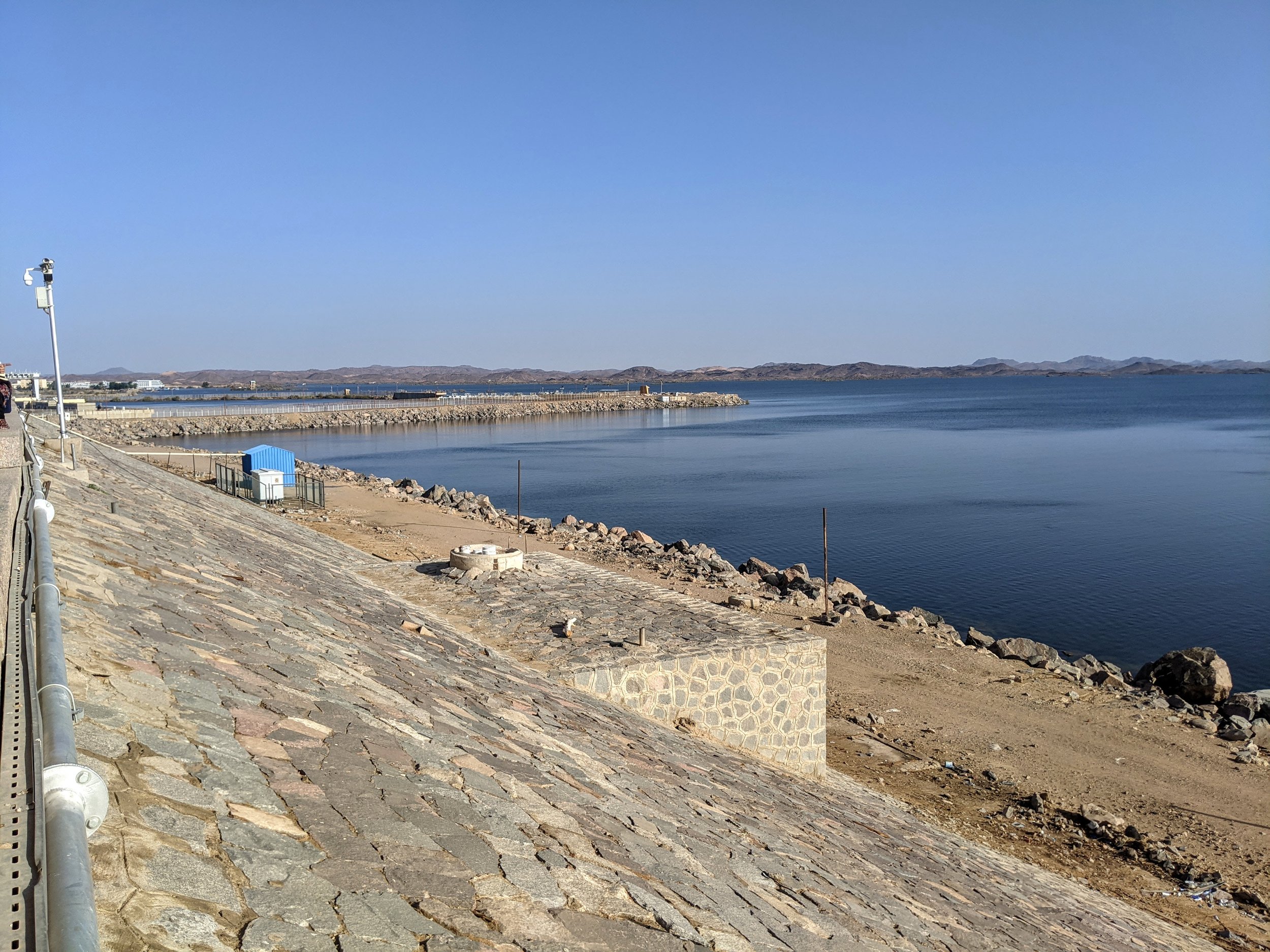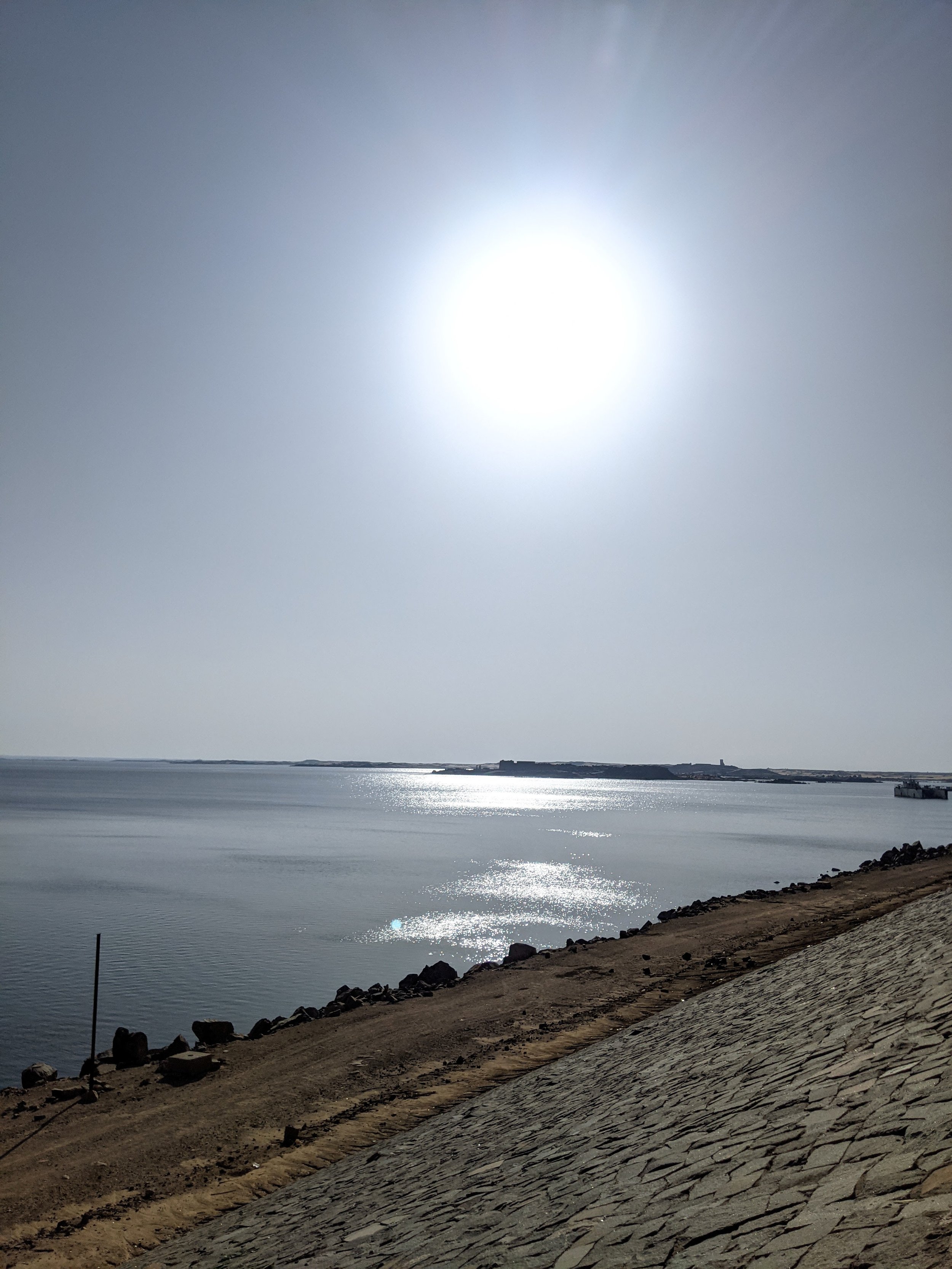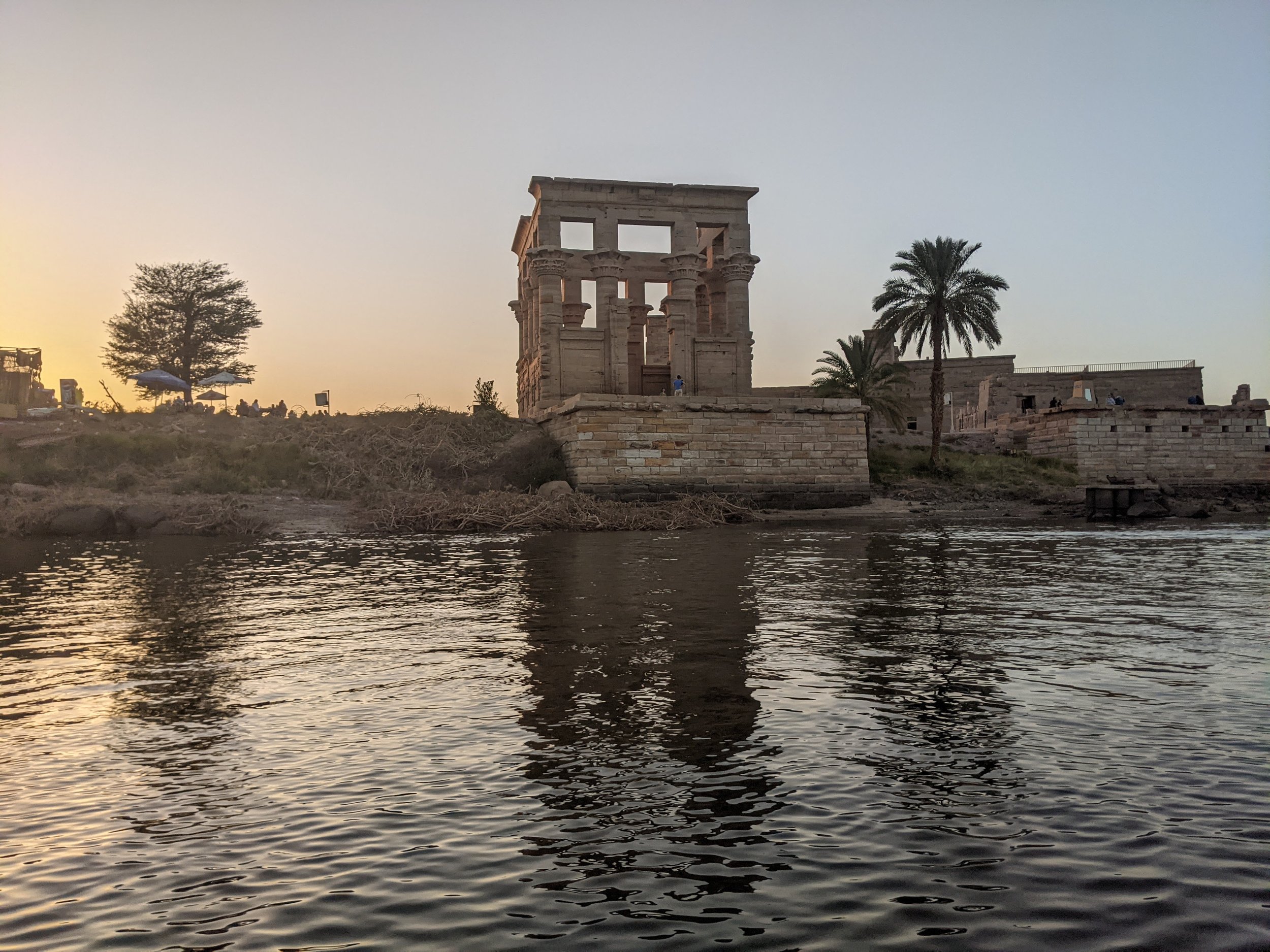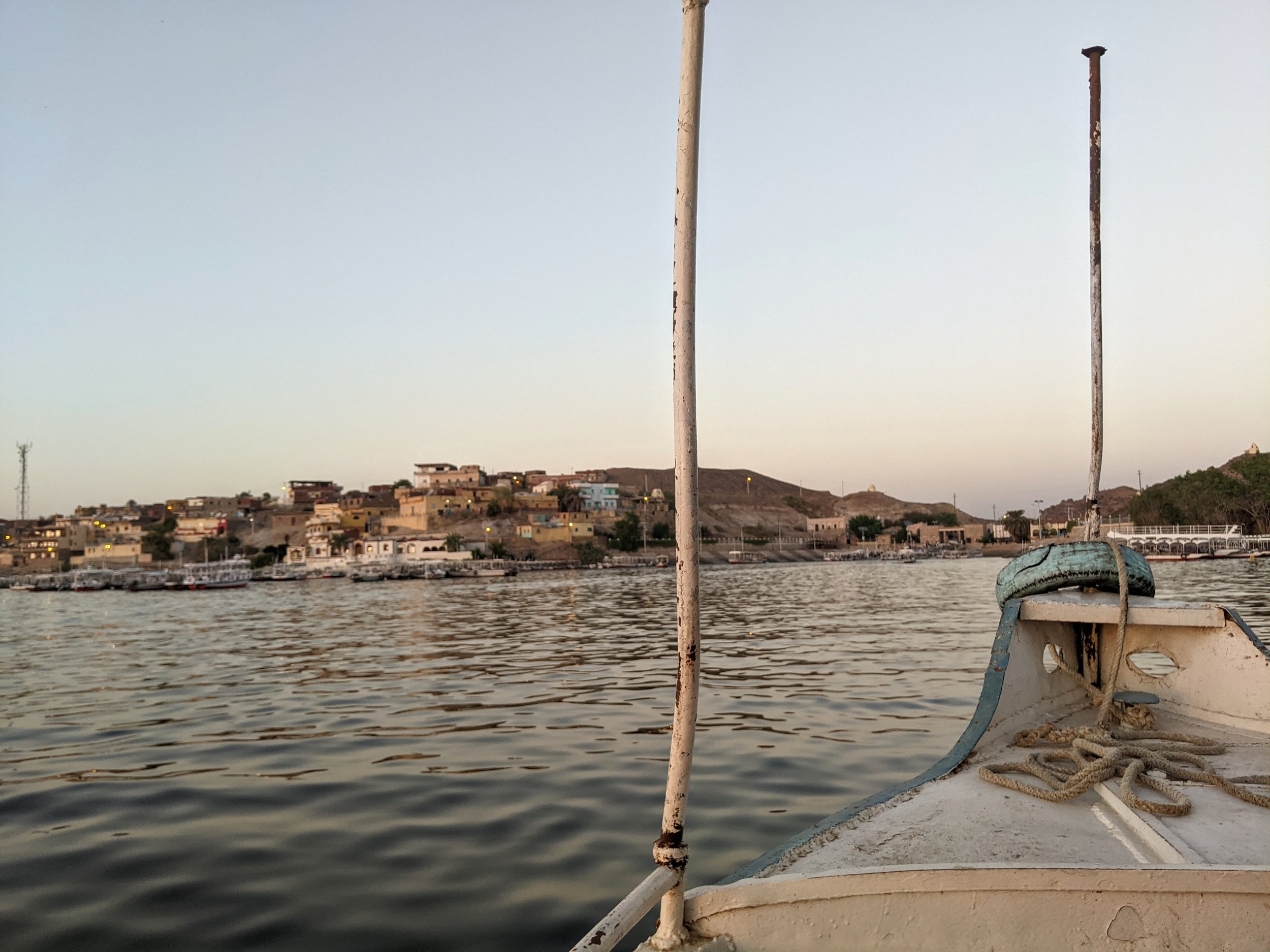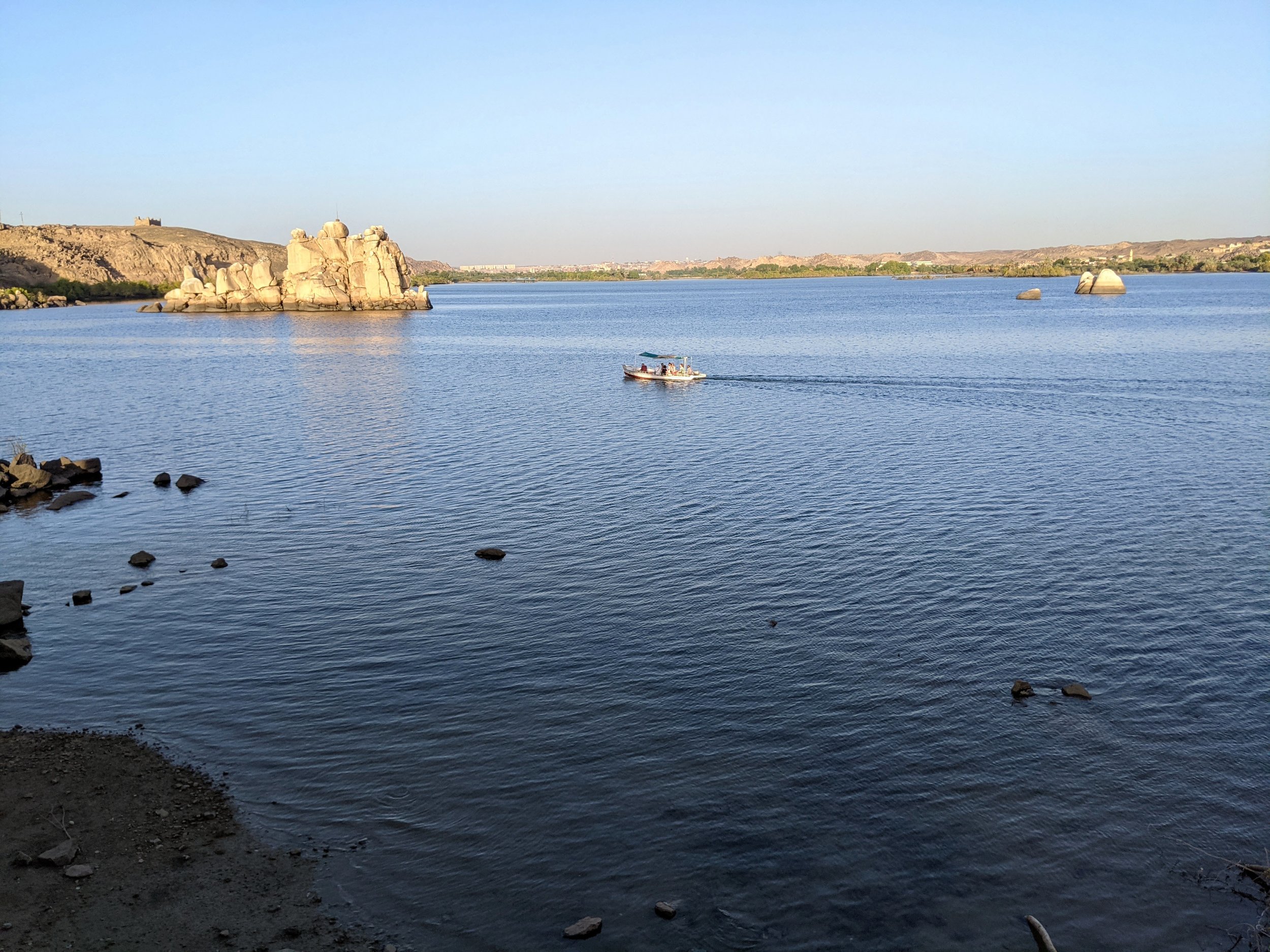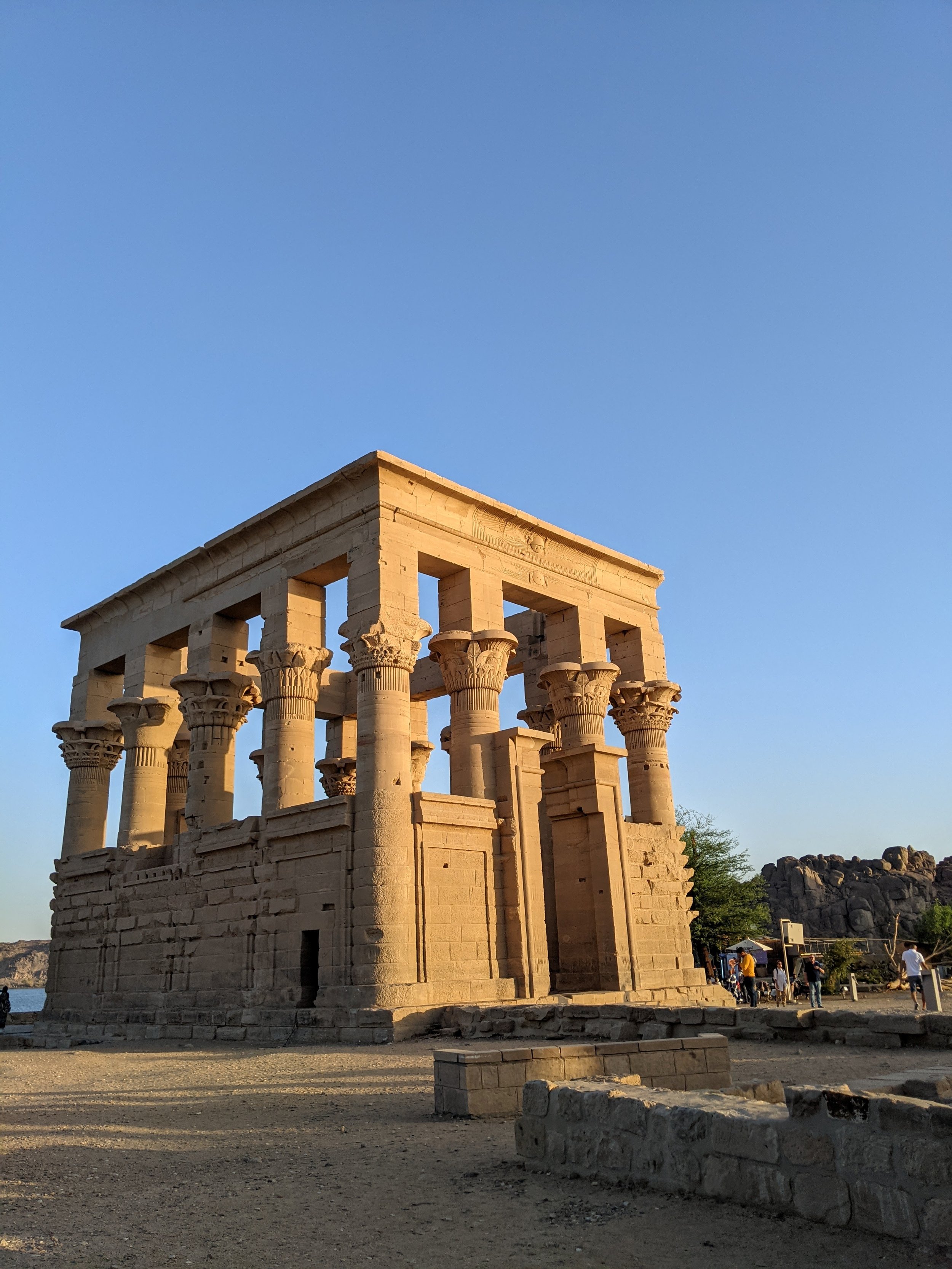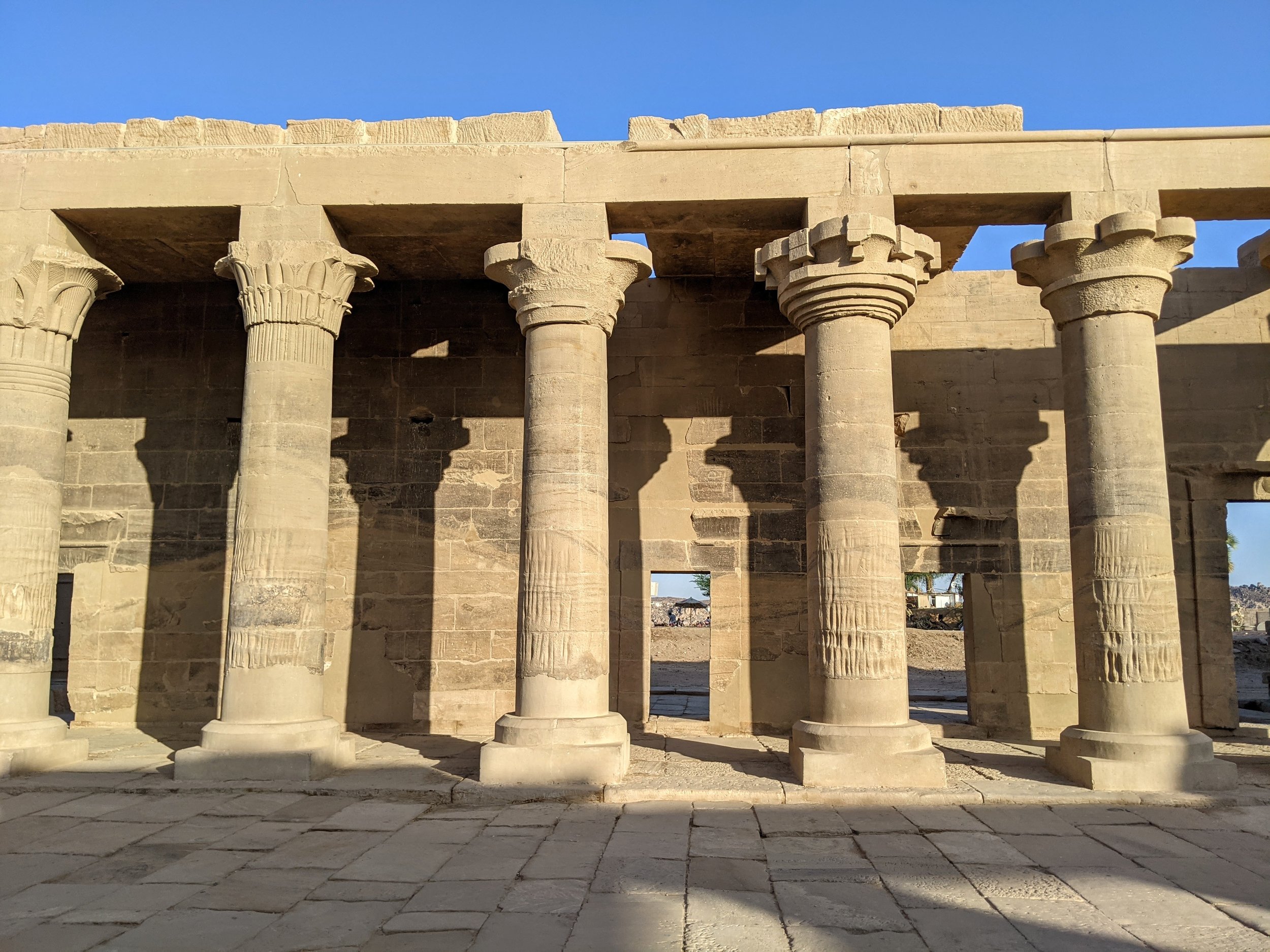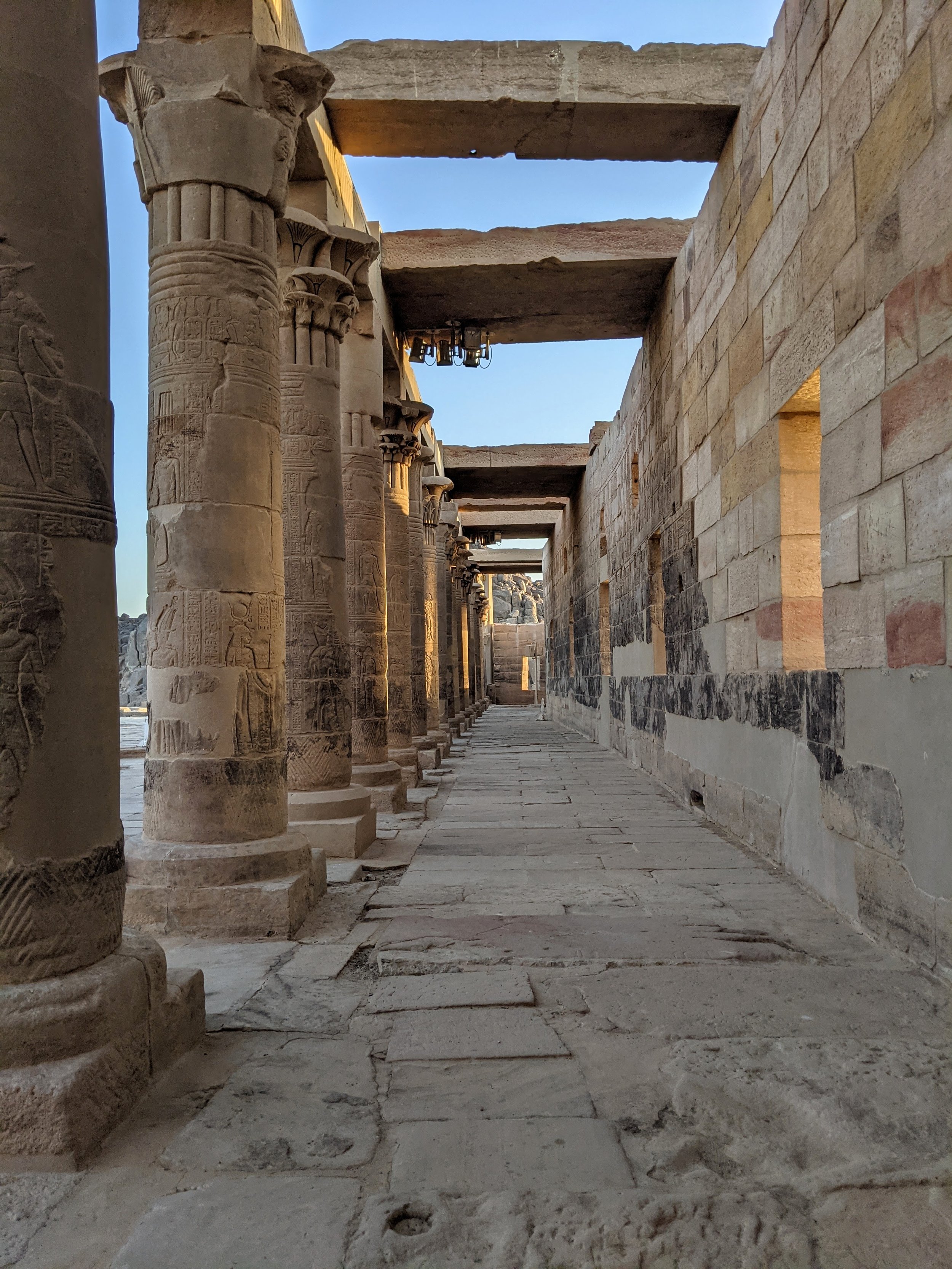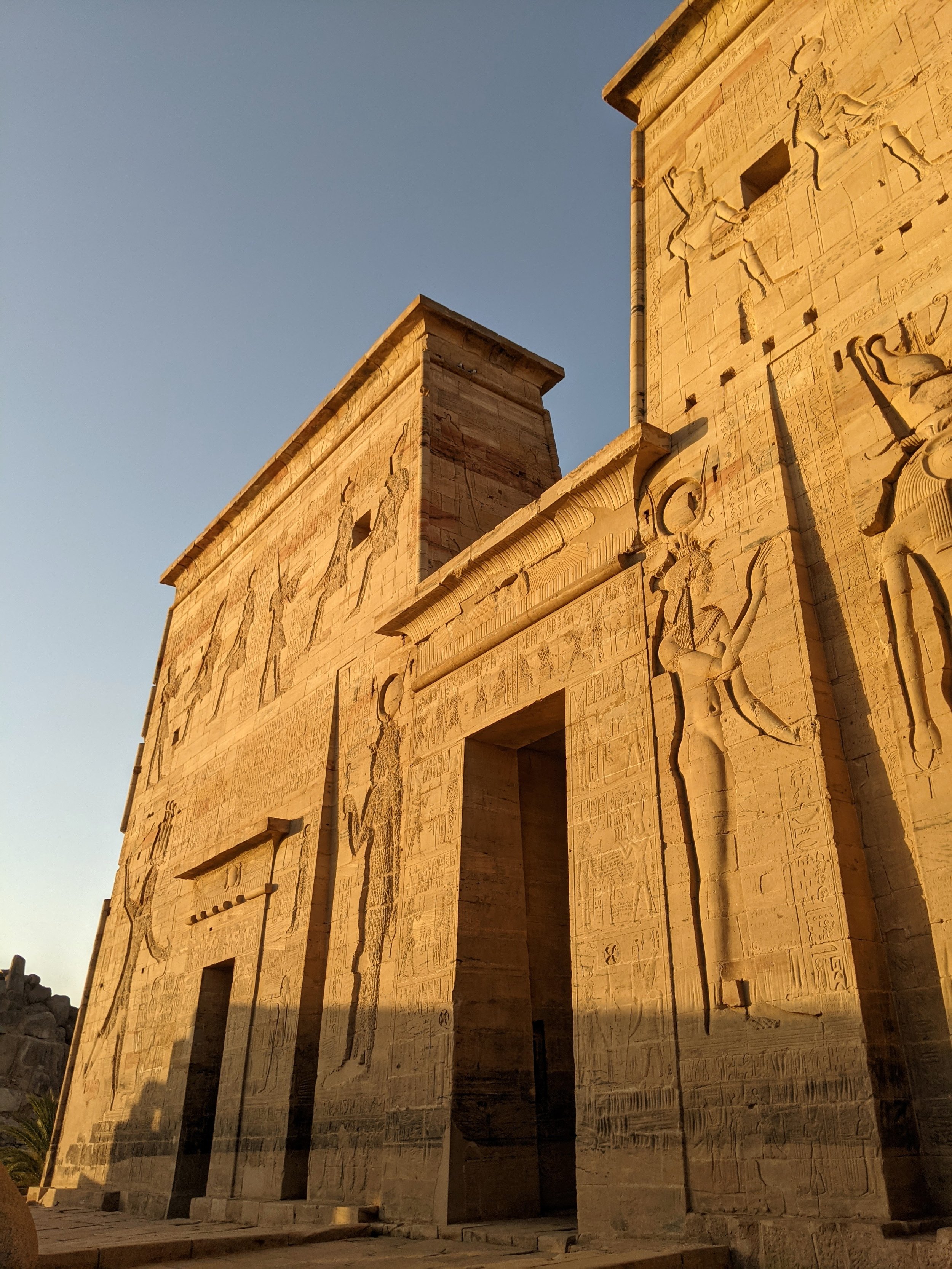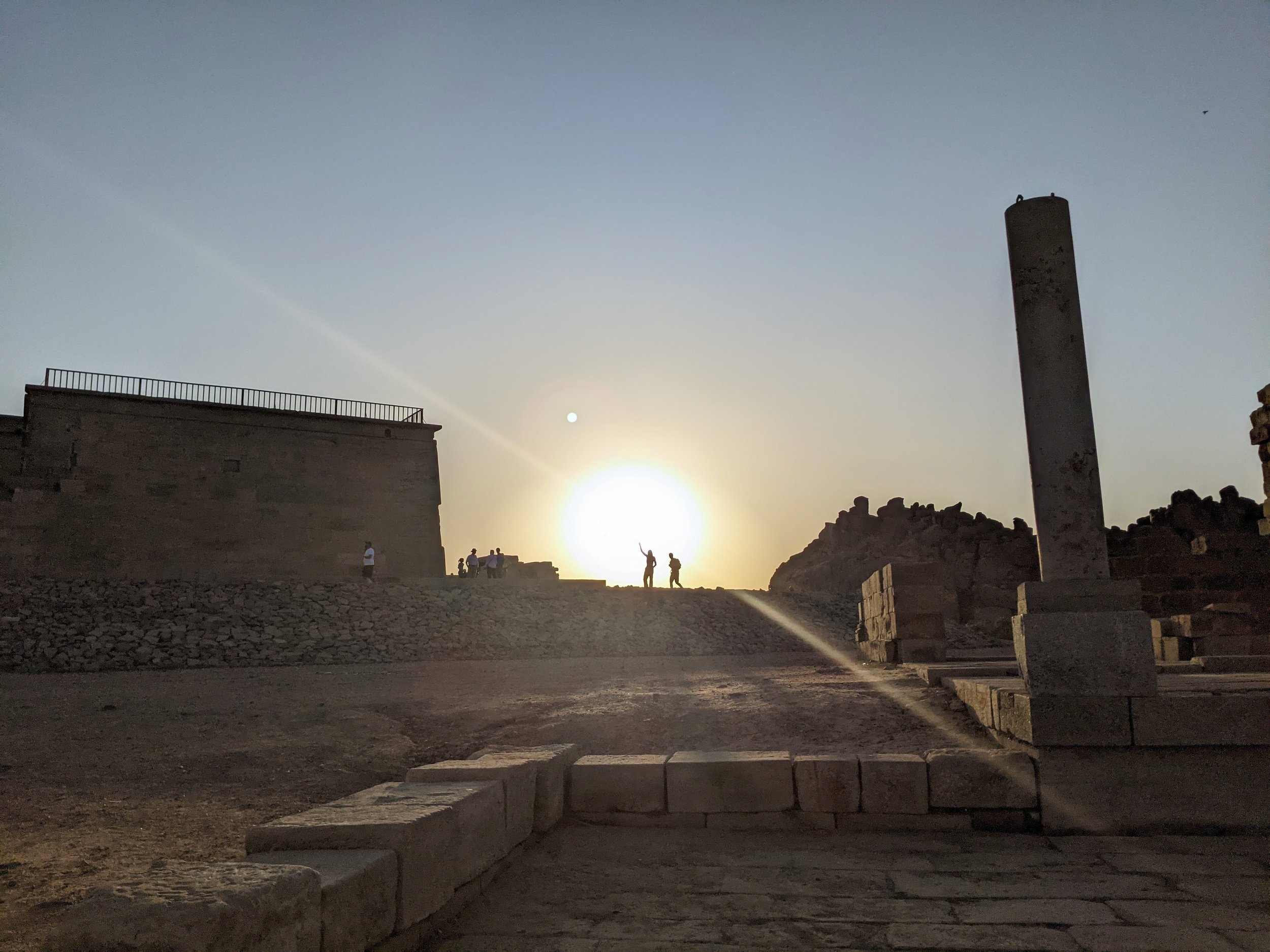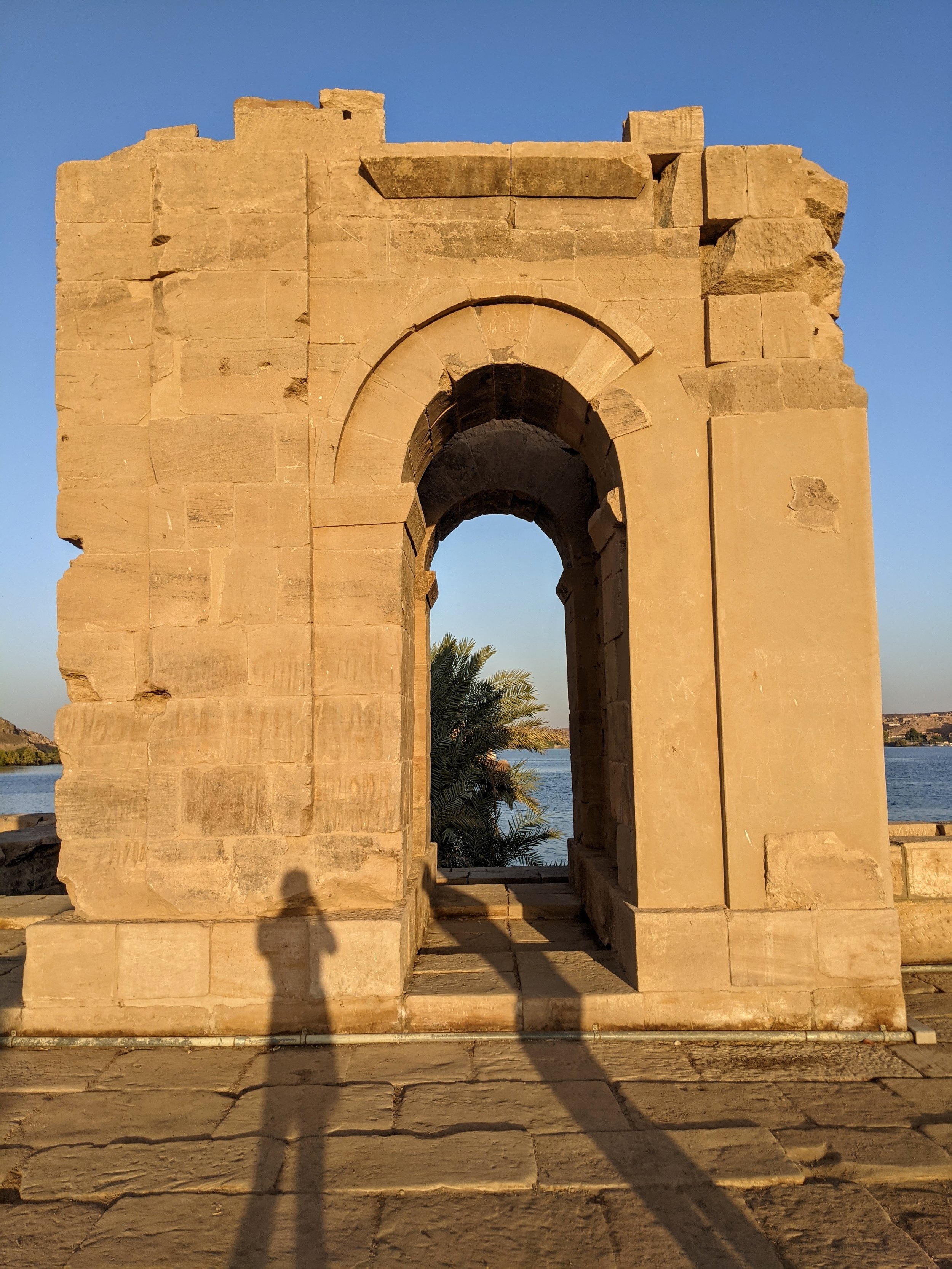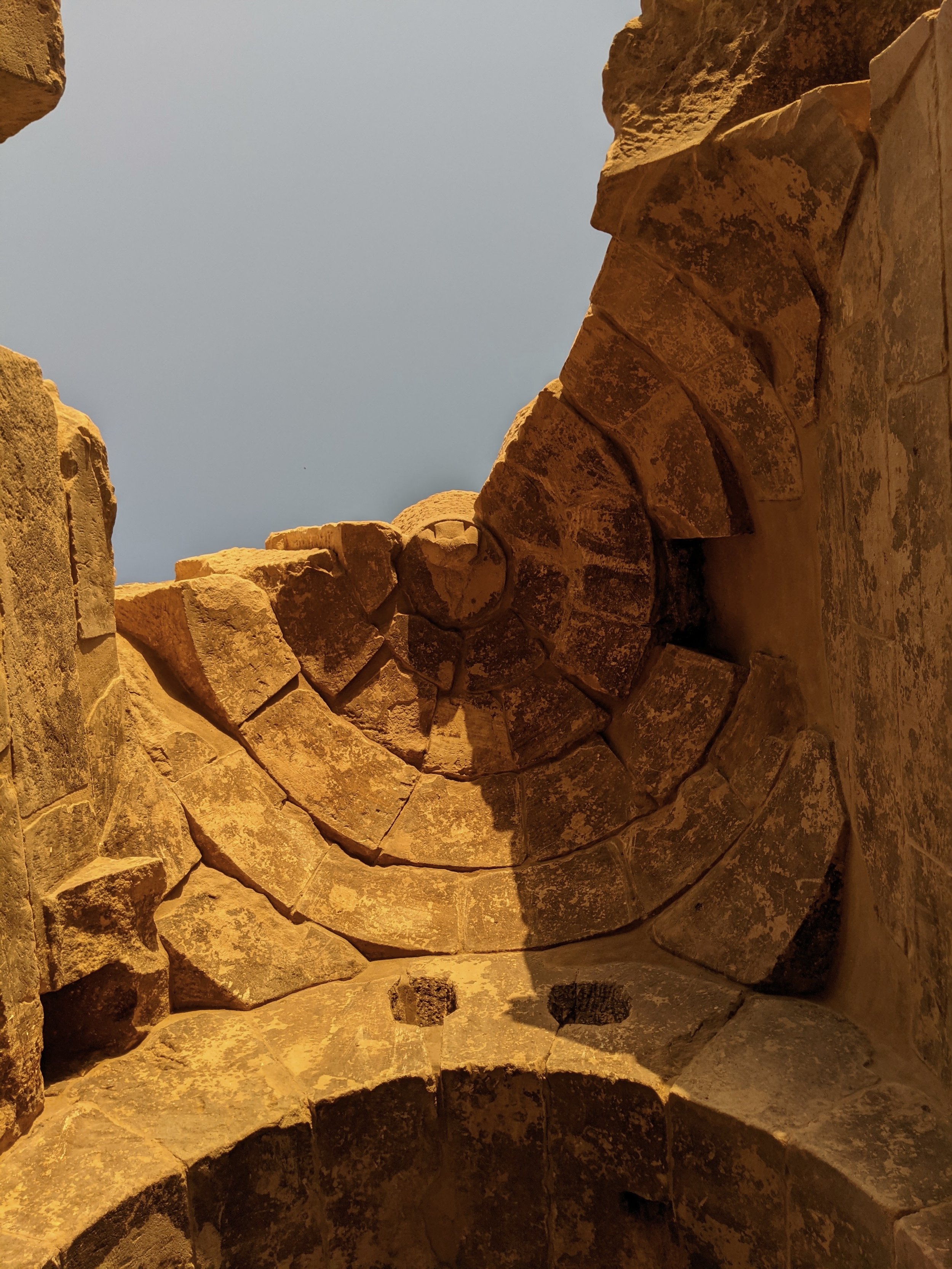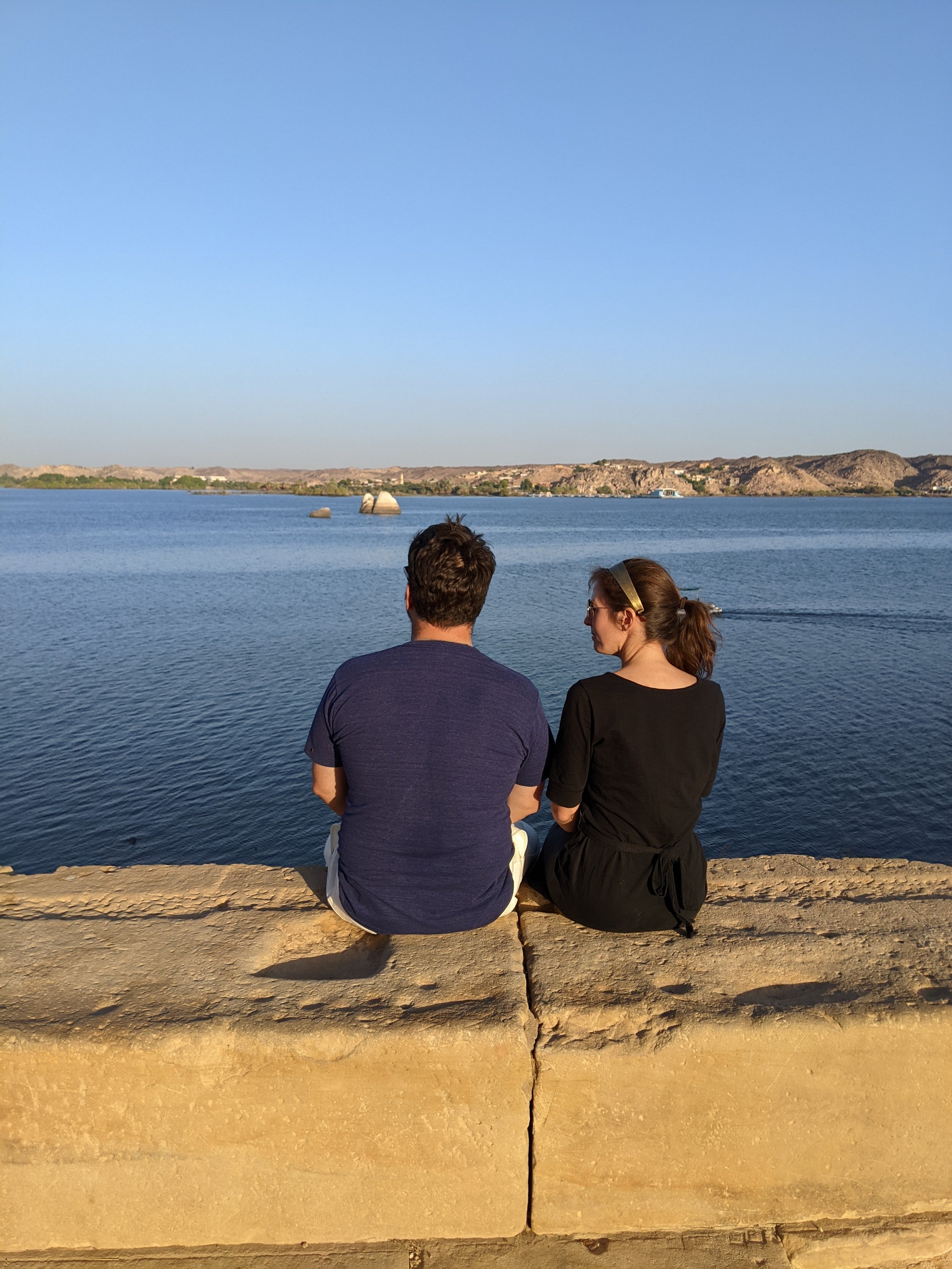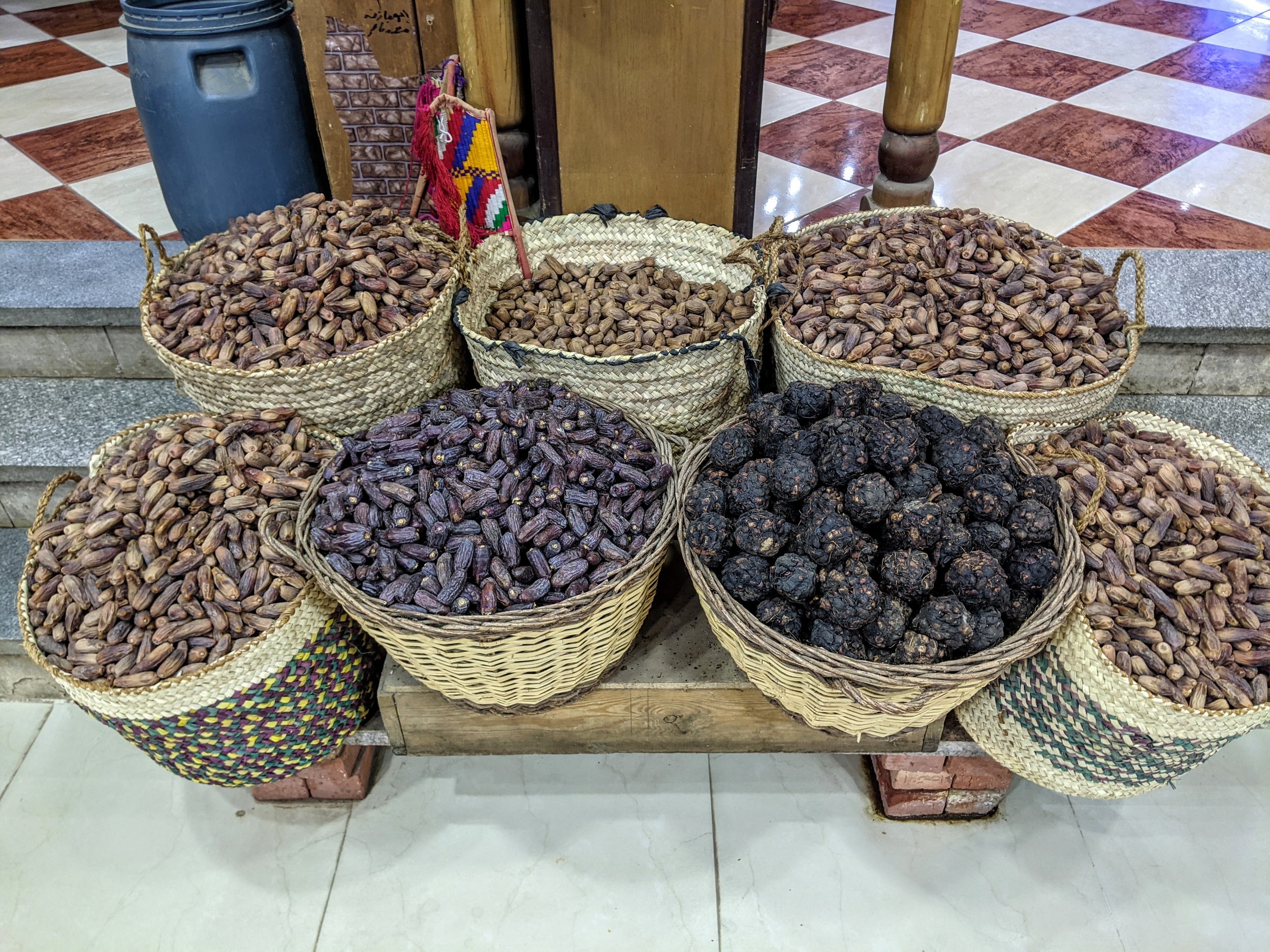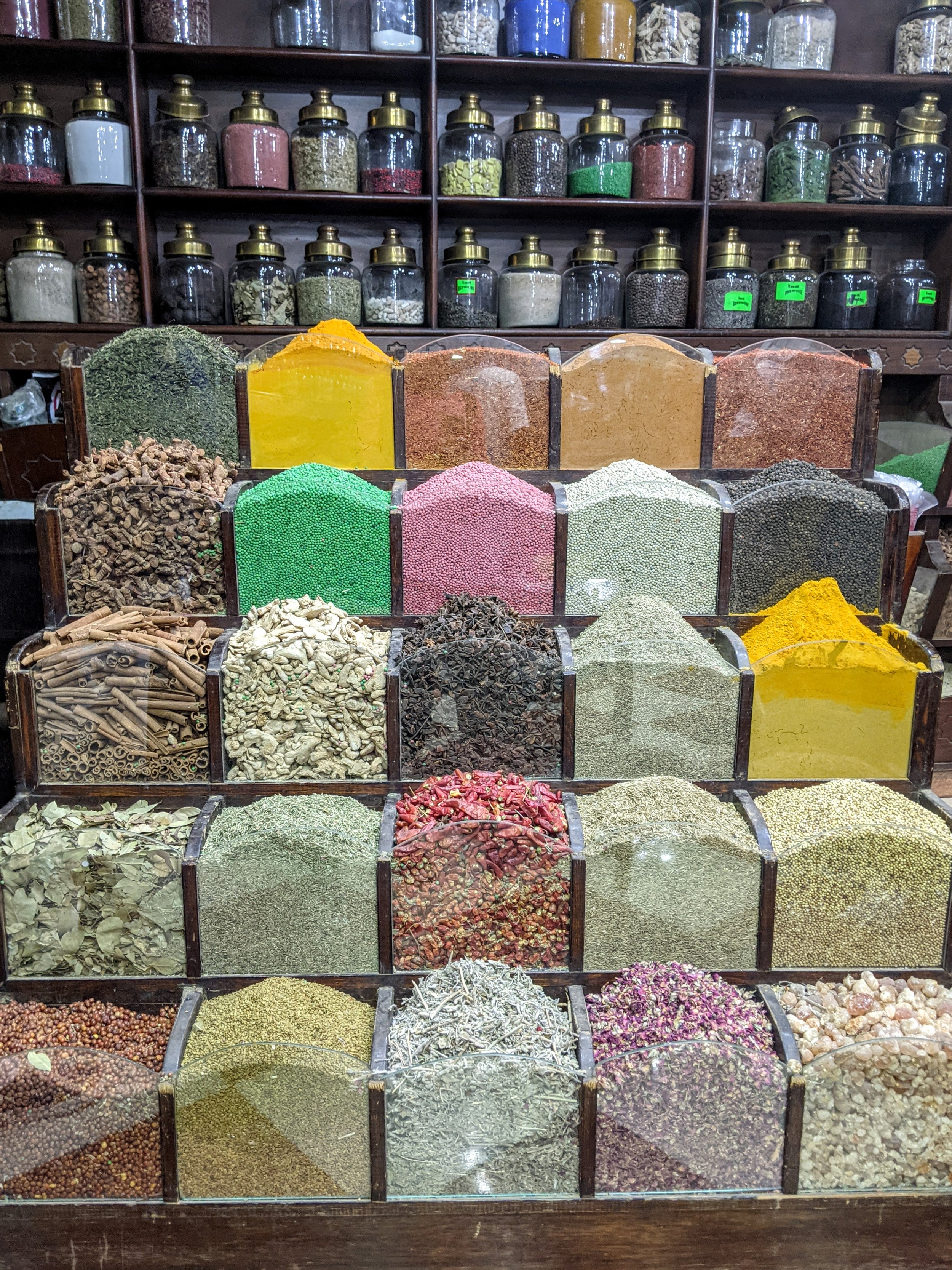aswan
My dear friend,
Do you remember your first encounter with ancient Egyptian history? I do: Fifth grade. A classroom beneath the eaves, with a low sloped ceiling and high, bright windows. I remember poring over drawings of the pyramids and images of the gods. Scattered through my diligent notes about early agriculture were new vocabulary words like “inundation,” “irrigation,” and “cultivation.” I learned that those who lived along the Nile needed the yearly flood but also, likely, feared it. Higher, stronger waters could wash out fields completely, while lower waters portended drought and famine.
Present-day fields along the Nile.
The ancient names for what we now call Egypt were determined by what the river touched and what it didn’t: “Kemet” (Black Land) referred to the rich, black, fertile soil deposited as the Nile receded each farming season, and “Desheret” (Red Land), referred to the vast red deserts beyond its reach. The Nile was the lifeblood of Egyptian civilization, but the whims of the river were beyond even the pharaoh’s control. The ancients assiduously recorded the height of each year’s flood, but they could not precisely predict it.
No wonder, then, that in the 11th century the Fatimid Caliph Al-Hakim bi-Amr Allah summoned scientific luminaries from across the Muslim world to find a way to control the yearly deluge. When the mathematician and engineer Abu Ali al Hasan Ibn al-Haytham arrived from Basra (present-day Iraq), the Caliph was pleased to hear his plan for a dam. After inspecting the Nile in Aswan more closely, however, al-Haytham realized that the feat was physically impossible. He was afraid to report this to the Caliph because the ruler had a reputation for behaving erratically and cruelly. For example, people said that once, upon hearing a dog bark in the street, he ordered all dogs in the city be killed. (As someone who has been woken by many a barking dog in Cairo, I understand the Caliph’s frustration but not his solution. Hadn’t he ever heard of a white noise machine?)
One of the strays that may or may not have been barking in the streets last night.
Al-Haytham feared being put to death if he brought the bad news back to the Caliph. Fortunately, the mathematician was not only good with numbers; he also turned out to be an excellent performer. He feigned madness instead of telling the Caliph the truth. The Caliph imprisoned him instead of killing him, where he remained for a decade until the Caliph’s mysterious disappearance. During his confinement, al-Haytham passed his time by studying optics. His experiments with light and angles resulted in two major findings: first, that light travels in a straight line; second, that light always comes from a place outside our eyes, rather than being produced by our eyes (a prevailing theory of the time). He experimented with the camera obscura, a concept which provided the foundation for photographic technology such as the smartphone with which I, exploring Aswan at the end of our Nile cruise, took pictures of the very dam he was imprisoned for not building. What a world!
A stray overlooking the Aswan High Dam.
Nine centuries later, when the British built the Aswan Dam, it became one of the biggest dams (and the biggest masonry dam) in the world. And yet, massive as it was, it still wasn’t big enough to store as much floodwater as it needed to. Completed in 1902, it was raised in 1912 and 1933 and finally replaced by the Aswan High Dam between 1960 and 1976. This is the dam that created Lake Nasser—now home to all those crocodiles who migrated south along the Nile. Although the water beckons on a hot day, I wouldn’t recommend swimming in it.
Although Lake Nasser has turned out to be an excellent way to store water for irrigation, turning flood zones into perennial and relatively predictable agricultural zones, this body of water also posed a problem: its very existence threatened significant archeological sites such as Abu Simbel and the Temple of Philae, which both had to be moved, stone by ancient stone, and reconstructed on higher ground.
Safely shifted from the first cataract (near the Aswan Dam) to Agilkia Island in Lake Nasser, the temple must be reached by boat. The light was especially lovely in the late afternoon, when we arrived.
Evidently there was a time between the construction of the first and second dams, before the temple was moved, when Philae was half-submerged. Visitors would have circled it by boat and imagined the ruins hidden beneath the surface. C., who has a fear of large underwater objects, likely would have skipped this part of the Aswan excursion.
Today, the temple feels as if it has always been here. Constructed mostly during the late pharaonic and early Roman era over a period of 800 years, the temple honors Isis: the lover / life partner of the great god Osiris and the mother of falcon-headed Horus. Osiris was famously killed and dismembered by his evil brother Seth, and Isis was the one who collected all his body parts, put him back together, and gave him new life. This is why the cult devoted to her came to be associated with nature, women, fertility, enchantment, and sexuality. The original site of the temple was chosen because it was reportedly the burial site of some of Osiris’s many pieces.
Although scholars see evidence of Isis in early Christian representations of the Virgin Mary, the relationship between the two has not always been easy. The temple bears plenty of scars where hieroglyphics have been chipped away to make room for a cross.
As stunning as the temple is, my favorite part of Philae turned out to be the ride to and from the island. As the sun set over the water, I thought about how Egypt has always been a land of extremes: red land and black land, desert and Nile, drought and flood, light and shadow.
Before returning to the boat, we stopped in downtown Aswan to search for a backgammon board in the local night market. Vendors on the main streets sell magnets and knock-off papyrus and bronze statues of pyramids, while the vendors in the narrow alleyways sell kitchenware and clothing and electronics to women jostling for space with their children in tow.
In a spice store—which our guide assured us was where locals shop, but which seemed to be frequented only by tourists such as us— we marveled at the colors and bought hibiscus, saffron, and mint. During his presentation (another key sign that this spice shop was not, in fact, for locals), the proprietor first asked us if we were married. Then, once our group had answered in the affirmative, he declared that he had some ginseng in stock that the men among us might find particularly… exciting. I spent most of the presentation gazing around the shop, sipping on hibiscus tea, and crunching on complimentary peanuts.
We returned to the boat to find our towels folded in the shape of strange pillow-men. They watched with bottle-cap eyes as we packed our bags and stuffed the not-required-but-highly-recommended stack of bills for tips into an official-looking envelope. We would be disembarking for good in the morning and shuttling toward the Aswan airport.
Since the road to the airport takes you away from the Nile and into the desert, the river-watered greenery quickly falls away and soon you find yourself rumbling once more across a sandy expanse. The sudden change in the landscape got me thinking again about the relationship between Aswanites and their environment. When are they partners and when are they antagonists?
On the one hand, Aswan gifted the ancient Egyptians the yearly floodwater and—with that water—the opportunity to build a life in the desert. Aswan also bestowed the granite that graces not only temples throughout Egypt, but also similar structures across the world. We saw the famous unfinished granite obelisk, for example, that had been carved out in the quarry but never removed.
On the other hand, the Nile’s capricious force could also destroy the very livelihood it made possible. And although humans have managed to exert some degree of control over the river, that control never comes without its cost: Philae is flooded, the crocodiles are relocated, the low dam must be raised, and raised again. Even the high dam’s positive impact on agriculture produces negative byproducts such as erosion, less fertile soil, fewer fish, and more disease.
This morning I read in the news that India is experiencing such an intense heat wave that birds are falling, quite literally, out of the sky. When you think about all of the ways we’ve damaged the world in our attempts to tame it, to control it, to make it more inhabitable—do you, too, find yourself worrying about what comes next?
Yours—
L.



